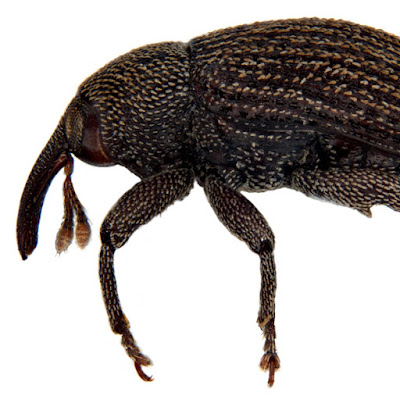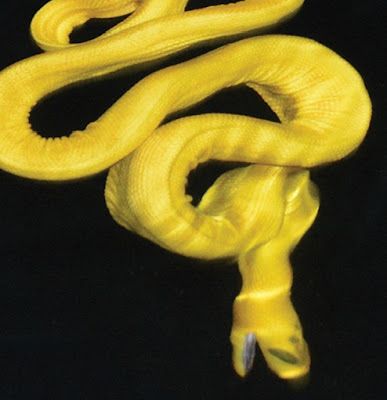[Most Recent Entries] [Calendar View]
Tuesday, July 25th, 2017
| Time | Event | ||||
| 2:23a | [Entomology • 2017] Host Associations of Melanterius Erichson (Coleoptera: Curculionidae: Cleogonini), with A Diagnosis and Delimitation of the Genus and Description of Five New Species
Abstract This paper presents the results of a three-year collecting and research project on Melanterius weevils in Australia, aimed mainly at discovering new host associations and assessing their fit to the emerging reconstruction of phylogenetic relationships in the large genus Acacia. A revised and extended diagnosis of the genus Melanterius is provided, as well as characters differentiating the genus from related and/or similar Australian genera classified in the tribe Cleogonini. Given the size (79 species) and morphological variation of Melanterius, and to facilitate the assessment of co-evolutionary patterns between the weevils and their hosts, the genus is divided into six tentative species groups characterised by particular morphological traits. New host and locality data are recorded for 23 species, including five species described as new to science, Melanterius abbreviatus sp. n., M. curvistriatus sp. n., M. psittacoides sp. n., M. pungalinae sp. n. and M. tesseymani sp. n. For each species, salient characters and a summary of known host plant species are provided. Melanterius tasmaniensis (Lea, 1909) comb. et stat. n. is raised from a subspecies of Melanteriosoma costatum to species level. All recorded host associations of Melanterius known to us are summarised, including those published, those recorded on label data associated with specimens in the Australian National Insect Collection and those recorded during this study. These host records are differentiated into true host associations (based on specimens reared from seeds), putative associations (based on long series of specimens collected from plants) and coincidental associations (based on single specimens collected from plants). Altogether, Melanterius weevils are recorded from 71 species of Acacia, still a small number in view of the ca. 1000 described species of Acacia, but it is likely that many or most of the other species are also hosts of Melanterius species or of the closely related genus Lybaeba. The pattern of host associations in evidence indicates that most species of Melanterius are not host-specific, developing in the seeds of a number of apparently related Acacia species. Nevertheless, several Melanterius species appear to have the potential to be employed as biocontrol agents if their main hosts become invasive weeds. Keywords: Coleoptera, weevils, host-plant associations, Acacia, biological control agents
Sara Pinzón-Navarro, Debbie Jennings and Rolf G. Oberprieler. 2017. Host Associations of Melanterius Erichson (Coleoptera: Curculionidae: Cleogonini), with A Diagnosis and Delimitation of the Genus and Description of Five New Species. Zootaxa. 4298(1); 1–77. DOI: 10.11646/zootaxa.4298.1.1 | ||||
| 9:14a | [Herpetology • 2017] Hydrophis platurus xanthos • A New Subspecies of Sea Snake from Golfo Dulce, Costa Rica
Abstract We describe a distinctive new subspecies of sea snake from the occasionally anoxic inner-basin waters of Golfo Dulce, Costa Rica, based on combined data garnered between 2010 and 2017 for 154 specimens, 123 free-ranging and 31 museum-held. The yellow sea snake, Hydrophis platurus xanthos Bessesen & Galbreath, subsp. n., is diagnosed by a notably smaller body size and nearly uniform yellow coloration, which contrasts with the black and yellow striae and tail spots or bands typical of the species. Within the modest geographic range (circa 320 km2), nearly all specimens possess both diagnostic character states. Bathymetrics appear to restrict genetic flow between this allopatric population and conspecifics in the broader Eastern Pacific. In perspicuous contrast to typical H. platurus, H. p. xanthos shows no association with drift lines, and feeds at night in turbulent waters, assuming a sinusoidal ambush posture never previously reported for the species. This evolutionarily significant unit (ESU) warrants taxonomic recognition and active protection. Keywords: Golfo Dulce, Costa Rica, sea snake, yellow color morph, platurus, type specimens, taxonomy Hydrophis platurus xanthos subsp. n. Diagnosis: Here we describe a new, allopatric subspecies, Hydrophis platurus xanthos subsp. n., or yellow sea snake, from the inner basin of Costa Rica’s Golfo Dulce. The new subspecies is diagnosed based on a dramatic color character state, as well as by a marked difference in body size. Aspects of behavior also appear to be unique. Etymology: From Greek xanthos, “yellow,” to highlight a diagnostic feature of this subspecies. Geographic distribution: The breeding population of Hydrophis platurus xanthos appears confined to approximately 320 sq.km. in the northern half of the Golfo Dulce, Costa Rica. A spatial gap up to 22 km separates the yellow sea snakes from the usually bi- or tricolored oceanic population, and appears to restrict genetic exchange (Bessesen 2012, Fig. 1). Conclusions Hydrophis platurus xanthos is a well-defined evolutionary subspecies inhabiting a small area of unusual geography. Given unique aspects of its behavioral ecology, it could well represent an intrinsically genetically isolated taxon of recent origin, in which case a species designation would be appropriate. We have been appropriately conservative here, in defining it at a subspecific level. This provides footing for protective strategies, while allowing future research to refine its taxonomic rank. Brooke L. Bessesen and Gary J. Galbreath. 2017. A New Subspecies of Sea Snake, Hydrophis platurus xanthos, from Golfo Dulce, Costa Rica. ZooKeys. 686: 109-123. DOI: 10.3897/zookeys.686.12682 |
| << Previous Day |
2017/07/25 [Calendar] |
Next Day >> |






